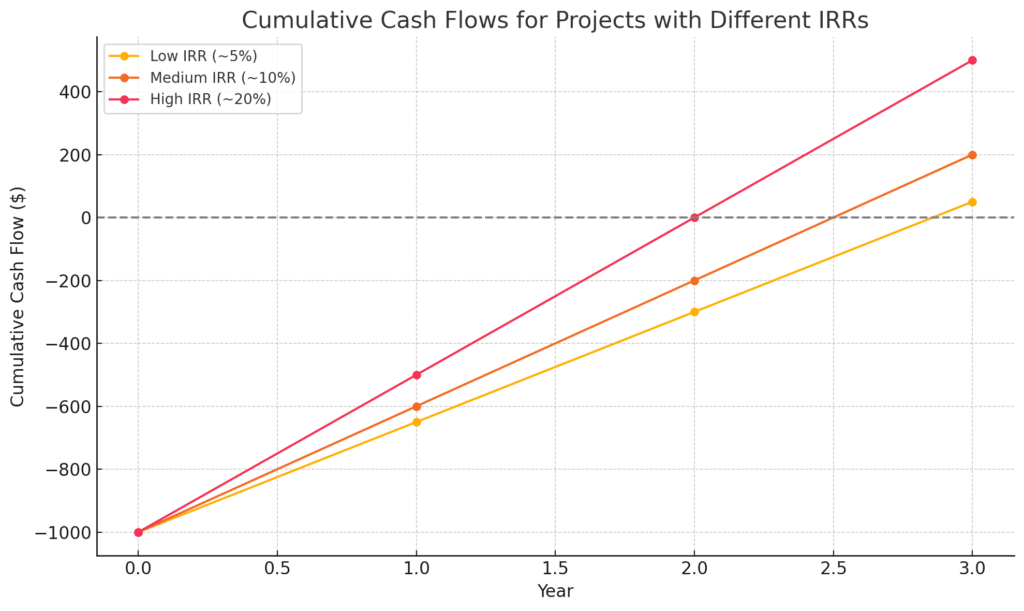IRR stands for Internal Rate of Return. It’s a financial metric used to evaluate the profitability of an investment.
In simple terms:
IRR is the discount rate that makes the Net Present Value (NPV) of all future cash flows (both incoming and outgoing) from an investment equal to zero.
Why it’s useful:
- It helps compare the attractiveness of different investments.
- A higher IRR generally means a more profitable or desirable investment (assuming similar risk levels).
Formula (not usually calculated by hand):
There’s no explicit formula for IRR like there is for ROI. It’s found iteratively (e.g., using Excel or financial calculators): 0=∑t=0nCt(1+IRR)t0 = \sum_{t=0}^{n} \frac{C_t}{(1 + IRR)^t}
Where:
- CtC_t = net cash flow at time tt
- nn = total number of time periods
- IRRIRR = the internal rate of return
In Excel:
You can use:
=IRR(range_of_cash_flows)
Example:
You invest $1,000 today and expect to receive $400 per year for 3 years.
Cash flows: -1000, +400, +400, +400
IRR ≈ 9.4%



